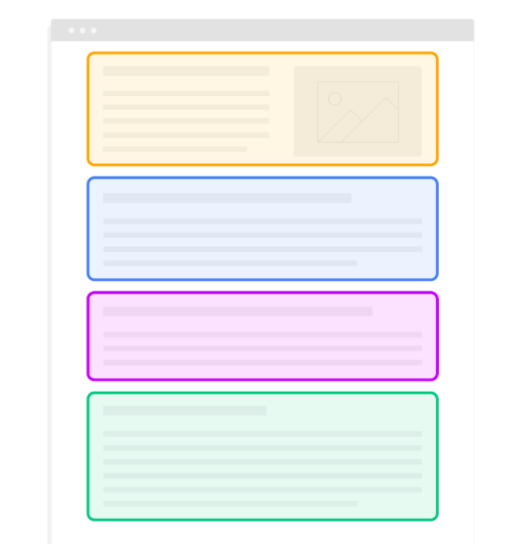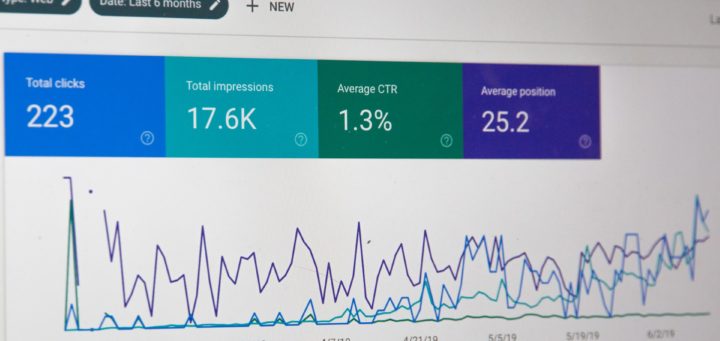6 Tips to Increase Clicks: SEO Hacks for 2021
What you’ll learn about the SEO hacks of today:
- There are six SEO hacks you can put into practice right now:
- Favicon SEO is a new area to focus on
- Core Web Vitals is the key to optimization
- Title tag boilerplates are a low-hanging fruit for optimizing your content for search
- Google’s FAQ schemas like snippets of useful information
- Google has started to parse content down into passages—and this is an opportunity
- Re-optimizing old content is still a good strategy
New year, new you — right? For us marketers, a new year means a chance to look at what’s changed in the search engine optimization (SEO) realm and build out a toolkit to make sure we’re set up for success. With that in mind, we’ve put together a list of six SEO hacks so that you and your team can embrace all that’s new and carry it into your SEO strategy. Let’s dive in!
1. Favicon SEO
Google has migrated some of its mobile capabilities to desktop search results. One of those changes? Favicons (or website icon). You’re likely already accustomed to seeing the ‘Ad’ on the left side next to results — this year we’ll start to see favicons in that same space. Now to most SEO professionals, this is small fries. Why should a 16×16-pixel visual even matter? Well, it could be the edge your website needs to attract a new customer from the search engine results page (SERP), regardless of where it ranks. We’ve seen content creators benefit by having continuity via thumbnails on YouTube, and this is Google’s SERP version of that.
An eye-catching and familiar favicon can become a visual indicator of content from your business. This indicates to readers that the content is coming from a brand they’re familiar with.
Favicon Dos and Don’ts
- Keep it simple, keep it small.
- Long words won’t look good. Initials or symbols will.
- Make sure the favicon is on brand with the rest of your website.
- Use one consistent favicon.
- Limit the use of multiple colors.
2. Core Web Vitals
It’s always been important to have a website optimized for user experience; one that loads quickly, presents well on mobile and desktop, and is easy to navigate. This year, Google is introducing Core Web Vitals as a ranking factor for SERP, making it unavoidable to optimize for effective results. Keeping site optimization top of mind in SEO results works two-fold: it future proofs your site and keeps you up to date with algorithmic changes with Google. It also creates a more pleasing experience for your audience.
The following are key areas you should look to optimize:
- How quickly and smoothly pages load.
- Responsiveness to user interactions.
- How easy the website is to use and navigate on mobile devices.
- The safety and security of a site’s connection as users are browsing through it.
- Image optimization, size, and rendering.
Tools like Lighthouse, Chrome Dev Tools, Chrome UX Report, and Search Console can give you insights into how web vitals are performing.
3. Title Tag Boilerplate Audits
Most of your title tags follow an easy-to-replicate template, often ending with your company name. For example in the following tag “Rideshare services in Whistler and Tofino | Uber” the |Uber would be considered the boilerplate. It’s something that is often repeated within a website that helps establish and reinforce your brand identity. Oftentimes it’s a suitable strategy to have your brand name at the end of a title tag, but we think this is where your boilerplate should end.
It’s important to only include title tags that reflect the content found on the page. Having title tags that are stuffed with content from other areas of your site complicates the job of Google search crawlers, potentially providing search results that lead audiences to the wrong area of your website. On top of that, A/B testing your boilerplates might lead to surprising results. For instance, |Uber Rideshare might yield more search results than |Uber.
Your Title Tags should be unique, reflective of the content on the page, and limited in their repetition of your boilerplate

SEO starts with understanding User Intent, and the habits that inform their searches
Photo by Benjamin Dada on Unsplash
4. FAQ Featured Snippets Show Up in SERP
So you’re Googling how long you should roast a turkey for that family dinner you might (finally!) get to enjoy with your parents this year and you want to know how long to cook your bird. You type “how long to cook a turkey” and the Google results page features “15 minutes per pound of turkey at 350 degrees C” in a snippet. This is an example of a FAQ schema that Google recently introduced.
As has been the case for years, your SEO efforts should be focused on optimizing for Google web crawlers (relevant headlines and keywords within the copy, and relevant title tags and meta descriptions). But more importantly, they need to cater to and provide value based on user intent (A topic we’ve covered extensively). If you’re able to get a featured answer to a FAQ related to your area of expertise, you’ll have earned A LOT of SERP real estate. Now, there’s no guarantee your snippet will be the one featured at all times, but any screen time you do get will be key to getting click-through from readers.
So why should you focus your SEO efforts here? These new features present an opportunity to get more clicks from organic search results…without higher Google rankings. Snippets show up above the first ranking result, easily captivating audiences’ attention!
5. Google Passage Ranking
Recently, Google unveiled Passages, a search technology that allows site crawlers to extract and rank specific passages of a web page (much like you might highlight a paragraph in a textbook). This is fantastic news for you if your content covers broad topics (e.g. baking techniques) as it provides you with several opportunities for one page to rank for different queries. This doesn’t mean that Google is ranking passages independently of pages (your pages should still be from head to toe optimized), but it does provide additional opportunities for ranking.
So how can you optimize?
Consider each section of a piece of content as a mini page, using headers to create subsections (passages) that might rank. For instance, you might have a sub-topic of ‘Methods to whip egg whites’ as well as ‘4 ways to separate egg whites from yolks’ in a meringue recipe. Creating small subsections creates an opportunity for your recipe as a whole to rank for meringue recipes, and separately, as passages, for egg white preparation methods.

SEO optimization in 2021 includes crawling for and ranking passages within long-form content
In addition to this, long-form content presents multiple new areas for your content to rank. In fact, Google can separate one long-form piece of content into 5, 10, or even 100 unique passages.
6. Re-optimize Old Content for Search Intent
At this point in your brand’s history, you’ve likely published a lot of content. For example, two years ago, you may have posted an insightful post about how to create a connection with your audience and optimized it for search. As we’ve already discussed in this post, a lot has changed in SEO since then.
This old content doesn’t have to be left to die in the dusty corners of your sitemap. Take the time in 2021 to refresh old posts and pages on your website with the new technologies in mind. Re-optimizing your content to better cater to search intent can open up a myriad of opportunities to appear in passage ranking, featured snippets, and more! There’s a gold mine of evergreen content that is ripe for re-optimization, and if you need a refresher on what search engines are looking for, you can revisit our quick guide to crawling, indexing, and ranking.
Owning SEO in 2021
I hope you found these SEO hacks useful and easy to apply. These small tweaks (and maybe even these ones, too) can easily sharpen your image on search engine results pages. While it seems they are all aimed at targeting search engine crawlers, they ultimately make the user experience easier, more convenient, and seamless — a win win for you and your audiences.
Photo by Stephen Phillips – Hostreviews.co.uk on Unsplash


